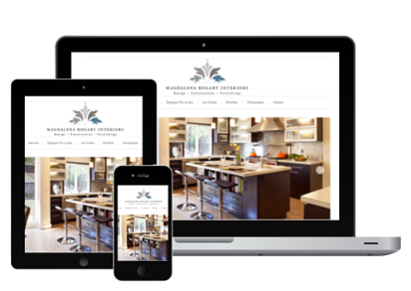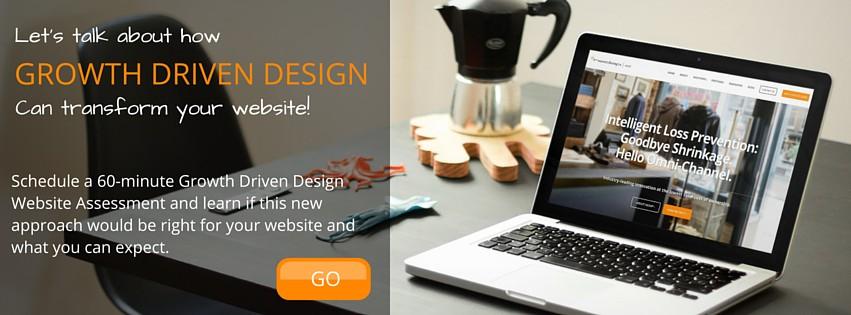5 Reasons Why Requesting Web Design Proposals Will Set You Up To Fail
Does this sound familiar? It is Friday afternoon; you are ready to wrap up your week, and your boss walks into your office, saying: "Oh, I forgot! We must get our website redone asap! Can you quickly call up some web design companies? Just get five proposals, including pricing, and then we can decide at the team meeting which we should go with."
Sound familiar? However, you know, it is not that easy. Finding a good website company isn't that easy.
To some degree, finding for someone to help you with your website redesign is like shopping for a new car — no, I don't mean hours of aggravation and frustration when dealing with pushy salespeople! But there are significant differences between needing an oversized flatbed truck, a used family minivan, or a sleek city-ready hatchback. So what you are shopping for really depends on what you need.
As with shopping for cars, the type of website you need depends on your goals and needs — and therefore, you will need to find a web designer who really can help you achieve those.
Thinking about your boss, you wonder why the sudden urgency. Something awful must have happened that your boss is focusing on the website: maybe a prospect or client vented about how bad the site is. Alternatively, the sales team is not reaching their quota again, and they are blaming the website for not delivering enough leads. Whatever it is, it sends you scrambling!
You quickly turn to Google and search for "web designer near me" or "website design company." There are thousands of companies out there. Some are bigger, others are more expensive, and have more experience or better clients to show for it — but they all offer the same thing using slightly different language and mostly the same lame approach.
So you pick ten companies and check out their websites, glance over their portfolio, scan their web design service page and — if you like what you see — you have a conversation with their sales team and ask for a proposal.
Requesting Proposals Seems The Logical Thing To Do If You Need A Website
What your boss is looking for is an apple-to-apple comparison: read their pitch, compare prices, and make a somewhat informed decision. It makes sense, right? How else will you pick a web design company from the thousands available?
We used to think so too. We responded to requests for proposals by looking at the old website and talking to the client about what they wanted to change and why. We would get lovely and well-intended emails like this:
Thanks for your time today - I thought the meeting was very useful. Can you please put all the information (Pricing, design suggestions, etc.) in a PowerPoint or Word Doc so I can show it to my boss? Thank you very much for your interest again! Hope we can work together soon.
And, of course, we did want to work with them as well. We were very thorough in mapping the process out, detailing the pricing of all the new features and functions, and even including first design suggestions in mockups. And half the time, we would win the bid. Hooray! We would get started with a kickoff meeting and get introduced to the entire team. We presented our solution... and that is usually when the whole process began to go down south. The discussions began and everything started to unravel.
Download our new eBook Growth-Driven Design 101 - Your Path To A Peak Performing Website
Why Requests for Proposals are Setting your Website up to Fail
1) Proposals Are Based on Assumptions & Few People's Opinions
Most of the time, clients who want a proposal expect a document outlining the approach, the projected activities, the planned features and functions, an estimated timeframe, and the exact pricing for the website redesign.
However, all the information web designers have to go on is:
- Information we find in our initial research (mainly the old website, reviews, and social media channels)
- The requirements that were outlined in the call (usually not more than an hour)
- In a best case scenario: a briefing document before describing the requirements and marketing goals as well as some key facts about the company and products.
This is not much to go on. So, web designers have to fill in the gaps with assumptions, estimates, and input from the people involved in the initial sales process.
2) Lack Of Transcendent Business Goals & Strategy
In the above-described process, we would start our website redesign process with a kickoff meeting, including all the critical stakeholders. Often, the foundation on which our proposal was built on is beginning to crack in that first meeting. There are a few reasons for that:
- The CEO mentions a new product that will be launched shortly — which changes how all other products are marketed.
- The VP of Marketing has a huge list of to-dos that were brainstormed in the last team meeting.
- Sales have a must-have requirement not mentioned before because no one had asked them.
Depending on the politics, corporate culture, and skill sets, this list looks slightly different for each company, but you get the picture. Everyone has a particular idea of how this should be accomplished. Ultimately, you would end up with a patchwork Frankenstein Monster cobbled together to make everyone happy.
We have found that websites built after a "Request for Proposal" process significantly underperform compared to those strategically planned with your goals in mind.
3) Constant Scope Creep Is A Given
 Often, our clients will find that the website they initially envisioned is not what they needed in the end.
Often, our clients will find that the website they initially envisioned is not what they needed in the end.
If you base your entire project on assumptions and estimates without a transcendent business strategy or overarching goals, scope creep is a given because as the design and the development progress, you will often find you did not think this part of the website through correctly and needed an entirely different tool or feature.
Many web designers will build in buffers for that - so you are paying from the get-go for inefficiencies. However, buffers are not always accurate, and as the project progresses, web designers are often forced to come back with additional fees, which is always unpleasant.
With our approach to scope website projects, we can better map out the budget and expectations to stay on target. When we talk about potential website design projects, I recommend that you and one of our website strategists get on the phone to discuss:
- How you are planning to use the website,
- What your marketing goals are,
- How many leads you are currently generating vs. how many you will need in the next 6, 12 months, etc.
In other words: You have to know EXACTLY where you want to be in 12-18 months, and you need a website that will get you there. So, having this website strategy planning session is a crucial first step to understanding if and how we could help you.
4) Request For Proposals Leads To Inefficiently Managed Web Design Projects
The above-mentioned inefficiencies also trickle through to the way the project is managed. Usually, proposals already include a timeline, and the project's scope is divided into. It will also outline the different steps of the redesign.
Usually, once a website design project is kicked off, it will be mapped out in a project plan following the Waterfall Method, nicely visualized in a color-coded Gantt-Chart. However, have you ever encountered a Gantt-Chart that turned out exactly as expected? No, because this method of project management is almost always resulting in scope creep, delay, and bottlenecks!
A better way to manage your website redesign projects is a SCRUM-based methodology (going through smaller, more manageable cycles of improvements) that is made to adapt to ever-changing scope, eliminate those bottlenecks and turn projects around on average 30-40% faster!
5) By The Time The Website Is Finished, Your Requirements Have Changed
Last but not least, due to the problems mentioned, we have found that websites that are based on a "request for proposal" situation take much longer to develop. An average small and medium size business website takes 3-4 months. Larger sites can easily take 6+ months. Then you will not make any major updates for another 2-3 years.
However, we live in times where everything changes so fast, so with such long upgrade cycles, you are running the risk of being stuck with a website that does not serve your user requirements anymore.
Conclusion
If you want to hire a web design company, you will have to have a way to compare companies and their approaches and get a feel for what they can deliver at what time and with what budget. There is no way around that.
The bottom line is: If you call me today and ask me for a website proposal, I will not send you one. I know you have to get back to your boss with your top five choices by Monday. However, I am happy to explain to your boss why this will not result in a peak-performing website.
I would be happy to help you run through an assessment of your business and marketing goals and develop a plan with you on how you can reach those goals. I will also help determine if our agency is an excellent fit for your company and supply your boss with all the relevant information he or she needs. So, let's give it a go, shall we?
Share this
You May Also Like
These Related Stories

Change or Die: Why Innovative Companies Embrace SCRUM For Peak-Performing Websites

Why "How Often Should I Redesign My Website?" Is The Wrong Question To Ask

.png?width=250&height=125&name=TrustBuilderLogoWhiteTranspBackgr(250x125%20px).png)


Comments (1)